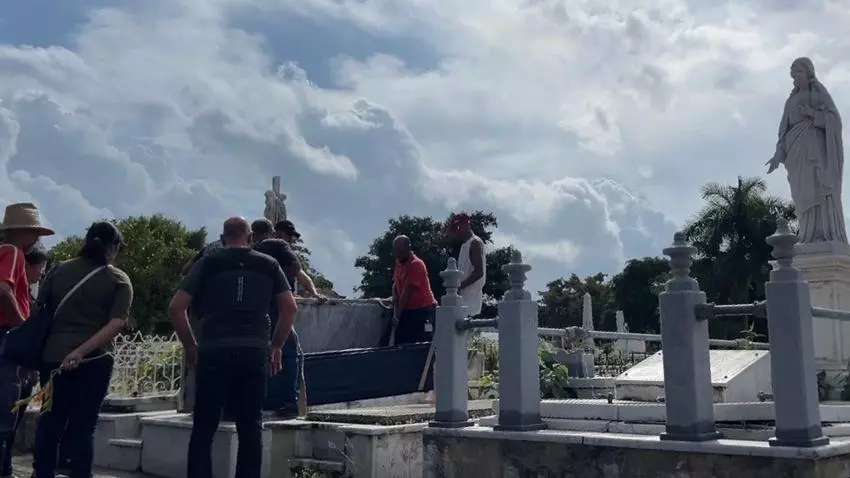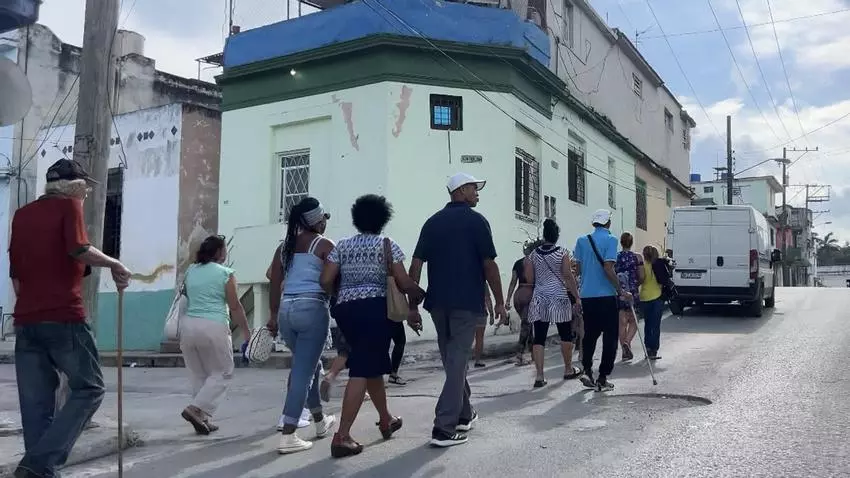All the conversations in both Havana cemeteries revolved around “that virus” that “everyone is sick” with.

![]() 14ymedio, Dario Hernandez, Havana, November 12, 2025 — “There’s more funeral activity these days.” The statement, made by a worker at the Colón Cemetery in Havana, once again contradicts the government’s reassuring messages about the arboviral epidemic plaguing the country . A simple stroll through several of the island’s cemeteries confirms the situation.
14ymedio, Dario Hernandez, Havana, November 12, 2025 — “There’s more funeral activity these days.” The statement, made by a worker at the Colón Cemetery in Havana, once again contradicts the government’s reassuring messages about the arboviral epidemic plaguing the country . A simple stroll through several of the island’s cemeteries confirms the situation.
At ten o’clock on Monday morning, the chapel located inside the island’s main cemetery in El Vedado was packed with people, and the parking lot was full of cars. Numerous burials were also taking place within the cemetery itself. The same scene was observed in Regla. All this activity is consistent with what can be seen at funeral homes in the capital, which have also seen increased activity in recent days.
The most striking thing, however, is the unusual transport being used to carry the coffins: vans from the Telecommunications Company (Etecsa). In Colón, one of them waited outside the chapel until the service was over. In Regla, a car from the telephone monopoly slowly led a funeral procession. The sight of the mourners weeping behind the state-owned vehicle was jarring.

One of them, however, was relieved: “Thank goodness at least these Etecsa vans are here, because I don’t know what happened to the hearses.” The man recounts that five years ago, when his mother died, even with the availability of proper vehicles, “it was already complicated.” “I don’t know if they’re sending these vans because so many people are dying and the hearses can’t keep up, or because the municipal services department simply doesn’t have them anymore,” this Havana resident ventures, wondering if the “diversion” of Etecsa vans might be affecting telecommunications service.
Although they did not mention the cause of death of the deceased about to be buried, all the conversations in both Havana cemeteries revolved around “that virus” that “everyone is sick” with.
This is the second consecutive week that the number of infections of what the Government now calls “non-specific febrile syndrome” has decreased, according to the Ministry of Public Health at a government meeting this Tuesday, but the cumulative total is starting to be alarming.
There are eight provinces where the number of cases is beginning to decrease—Havana, Matanzas, Villa Clara, Cienfuegos, Ciego de Ávila, Granma, Santiago de Cuba, and Guantánamo—suggesting that in the rest of the country, the number is at least stable, if not increasing. The province with the highest rate remains Sancti Spíritus, according to an article published Wednesday in the Escambray newspaper. However, the data on dengue fever, the most dangerous of the arboviruses circulating on the island this year, were very vague.

Authorities have been reluctant to give an absolute figure, but data from the Pan American Health Organization (PAHO) shows that a total of 9,602 people have now been infected, compared to 6,519 on October 23. This means the incidence rate has risen to 87.79 cases per 100,000 inhabitants, up from 59.6 per 100,000 three weeks ago. These numbers represent only a small part of the true situation, as the population is hesitant to go to health centers.
Chikungunya cases are also on the rise. As of Tuesday, the cumulative total was 21,681, compared to just over 20,000 last week. Regarding oropouche, experts stated that there have been no confirmed or suspected cases since September 26.
____________
COLLABORATE WITH OUR WORK: The 14ymedio team is committed to practicing serious journalism that reflects Cuba’s reality in all its depth. Thank you for joining us on this long journey. We invite you to continue supporting us by becoming a member of 14ymedio now. Together we can continue transforming journalism in Cuba.
